In 1969 a few African American meditators and teachers of the Transcendental Meditation program wished to bring the technique directly to their communities. TM Founder Maharishi Mahesh Yogi supported this vision to form an organization dedicated to teaching the TM technique to communities of color.
Transcendental Meditation Center (TMC), Inc. was first established for this purpose in South West Los Angeles, and quickly expanded with TMCs in Atlanta, Detroit, New York City, Oakland, St. Louis, San Diego, and Washington, D.C. The photo above is prized as the only one in existence of the group of teachers from the original TMC in Los Angeles. It was taken in 1977 at a gathering in Palo Alto, California.
In celebration of the 50th Anniversary of TMC, Inc. and Black History Month, we bring you this remarkable story and its legacy today. African American TMC teachers taught TM for the first health research on African Americans, participated in the first TM programs for rehabilitation in maximum-security prisons, and helped establish the first TM programs in urban schools.
In celebration of the 50th Anniversary of TMC, Inc. and Black History Month, we bring you this remarkable story and its legacy today.
In fact, their pioneering initiatives in education, health, and rehabilitation laid the groundwork for the successes of the David Lynch FoundationSM today. When renowned filmmaker David Lynch visited these TM school programs, it was the students’ stories of transformation that inspired him to establish his own foundation to teach the TM technique to one million children.
In a direct line from past to present, two of the original TMC teachers lead DLF’s The Meditation Center at THEARC (Town Hall Education Arts Recreation Campus) in Washington, D.C. Executive Director Rena Boone and Senior Program Director Jé-Ru Hall are teaching the TM technique to improve the quality of life and help revitalize the community in Wards 7 and 8, as part of the largest non-profit social services collaboration in the country. In a nod to the beginnings of such work with TMC, Inc., The Meditation Center is known by the same acronym, TMC.
TM teachers Rena Boone and Jé-Ru Hall and meditators talk about TM at DLF’s The Meditation Center
On March 17, 2019, TMC celebrated its history and legacy with a 50th Anniversary webcast, featuring inspiring talks and music by key figures, rare photos and video footage, and a keynote address by Dr. John Hagelin, director of the TM organization in the United States.
“Transcendental Meditation Hits at the Root of All Problems, which Is Narrowness of Vision,” Says Maharishi in Ebony
In February, 1968, on the banks of the Ganges in Rishikesh, India—shortly before the famous arrival of The Beatles—Maharishi took time from his TM teacher-training lectures for an in-depth interview with Ebony editor Era Bell Thompson.

Maharishi Mahesh Yogi, Rishikesh, India (photo by T. S. Satyan for Ebony, May 1968)
The American civil rights movement of the 1950s and 60s, led by Dr. Martin Luther King and others, successfully used nonviolence, civil disobedience, and bus boycotts to achieve enormous progress—from the unanimous U.S. Supreme Court 1954 ruling that school segregation is unconstitutional, to the Civil Rights Act of 1964 and the Voting Rights Act of 1965.
But this social change was also turbulent. There were violent reactions to civil rights work in the South, and urban riots across the country.
In this context, Thompson began by asking Maharishi, “What part can Transcendental Meditation play in the world racial situation in these times of tension?”
“These are very difficult questions,” Maharishi began. “The two races in a nation are just like two brothers in a family. No two men think or work alike. Their approach to things and experiences are always different, yet it is possible for them to live in happiness and harmony and to make others more happy, peaceful,” he said.
“Transcendental Meditation hits at the root of all problems, which is narrowness of vision,” he continued. “Through Transcendental Meditation we raise the level of consciousness in both black and white people. Once universal awareness begins to gain ground in one’s conscious level, all will be peace, harmony, and happiness… And then there will be a time when black will be learning from white and white from black. When the heart is expanded, the mixing will be automatic; tolerance will be infinite; love will be great.”

Maharishi wanted to meet with black leaders to discuss the potential for the TM technique to reduce stress and help solve racial tension and discrimination. “Would you like to meet Dr. King?” Thompson asked. “I’m dying to meet him, tell him,” Maharishi said. “In order to change the course of the earth from suffering to happiness, it is a cooperative enterprise. The top leaders of the community come.”
Tragically, Dr. King was assassinated two months later, on April 4. The story of his historic work and life are featured on the May 1968 cover of Ebony, in which the interview with Maharishi was published.
Maharishi was never able to meet the civil rights icon. But when he returned to the United States, he met a new African American meditator who would become a groundbreaking TM leader, teacher, and organizer for black communities.
“Through Transcendental Meditation we raise the level of consciousness in both black and white people. Once universal awareness begins to gain ground in one’s conscious level, all will be peace, harmony, and happiness.” —Maharishi, Ebony, 1968
Stanley Lewis, a Visionary from Watts
In June 1968, a young community organizer, director, and spiritual seeker named Stanley G. Lewis heard about the TM technique from Harriet Dee Monroe, one of his circle of black nationalist friends working on behalf of civil rights and African American empowerment.
Lewis was a foot soldier in President Johnson’s War on Poverty, working to increase black employment in Los Angeles. He also used the arts and theater as a tool for community building.
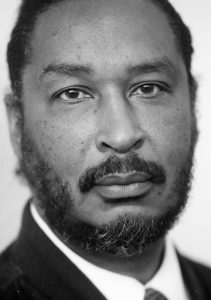
Stanley G. Lewis, co-founder of Transcendental Meditation Center (TMC), Inc.
When Lewis learned the TM technique, it was nothing like other practices he’d tried. “I was astounded that the experience was so profound. Everything that had been promised in other meditations, if you did them long enough, just happened in the very first experience,” he says in a Skype conversation from his home on Reunion Island. Within the first week, “I was sold. This works. There was no doubt in my mind.”
Whenever Lewis found something valuable, he wanted to share it. He knew right away that the TM technique was something he wanted to give back to his community. He was already involved in other organizations, which were focused on material aspects of life. “But here was Transcendental Meditation, and it was accessible, and immediate,” he says. “There were so many positives about it, and I knew this is where I belonged.”
In July, Lewis had a chance to put that impulse into action, when he and Monroe attended a lecture by Maharishi in Santa Monica.
“Maharishi said the problem in America was stress, and that stress was the cause of the bad feelings between people,” Lewis recalls. “So when the lecture was over I raised my hand and I said, ‘Well, if stress is the problem, why don’t you have TM Centers in the high-stress African American areas?’ And Maharishi said, ‘No one has volunteered to do that.’ So I said, ‘Where do you go to volunteer?’ ”
Maharishi invited Lewis to begin training to be a TM teacher that August, at a two-week advanced TM Retreat he was giving in Squaw Valley, California. In a matter of minutes, Lewis’ life took a new direction. Before long a new TM organization would be born.
“If stress is the problem, why don’t you have TM Centers in the high-stress African American areas? And Maharishi said, ‘No one has volunteered to do that.’ So I said, ‘Where do you go to volunteer?’ ”
—Stanley Lewis, co-founder of TMC, Inc.
The Grassroots Beginnings of TMC, Inc.
In Squaw Valley, Lewis met with Maharishi to talk about establishing a TM Center in South Central Los Angeles and starting an organization dedicated to bringing the TM technique to black communities. African Americans like Lewis, Monroe, and others had been learning TM, but there had been no formal outreach to communities of color.
“That was the beginning of the whole process of rethinking the way of representing Transcendental Meditation to the public, and particularly to the black public,” Lewis remembers. “First, it’s going to be called ‘Transcendental Meditation Center,’ so people can find it if they call 411.” At the time, none of the TM organizations, such as the Students International Meditation Society (SIMS), included TM in their names.
“What I found very effective was relating to my experiences as a human being, born as a multiracial black man in America… and how meditation had helped me cope with those circumstances.” —Stanley Lewis
Dr. Marty Hewlett, a researcher at the Los Angeles Veterans Administration and a friend of Lewis, also came to Squaw Valley. Maharishi invited them both to the next TM Teacher Training Course in Rishikesh, a year away. Meanwhile, not wanting to delay any longer in bringing TM to minority communities, Maharishi trained them to be Transcendental Meditation Lecturers.
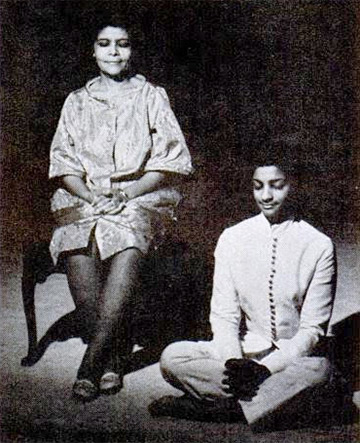
Families in the L.A. community hosted introductory TM talks and TM courses in their homes (photo courtesy of Ebony, May 1968)
When Lewis and Dr. Hewlett returned to L.A. they contacted black meditators to host introductory talks in their homes. The TM courses were then taught by guest teachers like Paul Horn, the well-known jazz musician. How did Lewis talk about the TM technique to a black audience?
“What I found very effective was relating to my experiences as a human being, born as a multiracial black man in America, and the kinds of things I ran into and how meditation had helped me cope with those circumstances. I was talking from the heart, directly to them not at them,” says Lewis.
Lewis left for Rishikesh in 1970, with his friend Bob Kealing. Dr. Hewlett, now a new father, stayed home with his family. There they were joined by Paulene Saxton, an African American meditator from Atlanta. Together, the three of them became the first TMC teachers.
In Rishikesh Maharishi formally approved TMC, Inc. as an organization, and appointed Lewis and Kealing as the co-founders and directors—telling them to “teach as many as you can as fast as you can.”
A Thriving Community Center for African American Meditators
When Lewis and Kealing returned to Los Angeles, they opened the Transcendental Meditation Center (TMC) in Leimert Park, a Los Angeles arts district in the heart of the African American community. Charles Nunley joined as TMC’s third co-founder, quickly becoming the behind-the-scenes “backbone” of the new organization, recalls Lewis. Saxton went back to Atlanta and opened a TMC in Georgia.
Hundreds of people were learning the TM technique, remembers Lewis. They heard about the benefits by word of mouth and also on local radio—with 20-second celebrity spots by musical artists like Stevie Wonder, who also learned TM. This innovative approach was helped by the fact that Lewis and Kealing had taught the TM technique to everyone at the station, so the DJs played the spots whenever they could squeeze them in. Lewis also hosted a Sunday radio show called “Transcendental Meditation Hour” on KTYM 1640 AM in Inglewood.

Sibongile West learned the TM technique at the Los Angeles TMC when she was 16 and became a TM teacher on the Ethiopia course. She is the Director of African PTSD Relief, and a TMC Webcast organizer.
Sibongile West was one of the many people who started TM at that time. She was 16 and went on to become a TM teacher herself. In our phone conversation from Los Angeles, she recalls how the TMC was a thriving community center. Meditators gathered for monthly celebrations, with group meditations, potlucks, and entertainment.
“We were in a community that really celebrated the arts. There were a lot of art galleries around, and all the artists learned the TM technique—some of them would have their art work at the Center,” says West. “We had so many musical artists who were part of the TM Center, so people would perform.”
Former Capitol Recording artist Sheree Brown’s first performances were at the TMC when she was a teenager. Grammy-nominated singer and composer Patrice Rushen was a fixture at the Center prior to her successful career as a recording artist.
TMC Expands with New TM Teachers and Locations
With the growing popularity of the TM technique in communities of color, the need for more teachers grew as well. Many meditators were inspired by Lewis and Kealing to become TM teachers themselves.
For young actress Mpingo Griffin, this process happened rapidly. One evening in June, 1970, she was waiting for a friend to go to a theatre performance by the Negro Ensemble Company. “When the doorbell rang, I opened the door and looked in amazement at this young man in his mid- or late twenties standing next to my friend. I think my mouth literally fell open,” she shares in an email.
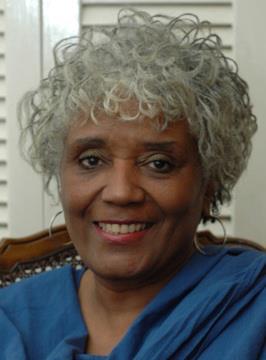
Mpingo Marilyn Griffin, an original TMC teacher in Los Angeles, is an organizer of the TMC Webcast
“Was it because he was ‘fine’? No, he was average looking. However, there was a glow around him. The calm radiating from him was exceptional. I remember standing in the doorway and instantly thinking that whatever he had, I wanted it!” recalls Griffin.
The young man was Bob Kealing, who had just returned from India as a new TM teacher.
By August, Griffin and other meditators inspired by Lewis and Kealing, went to Maharishi’s advanced course in Humboldt, California. “Our experiences and knowledge were due to Stan and Bob. Each of us was involved in activities and organizations in our community, and we appreciated that they were introducing the TM practice to the black community,” she writes. By November, she and other African American meditators went to the TM Teacher Training Course in Mallorca, Spain.
TMC continued to expand, as participants on training courses in Europe and America heard about TMC and as TM teachers in other cities heard about this new TM organization dedicated to minority communities.
“Our experiences and knowledge were due to Stan and Bob. Each of us was involved in activities and organizations in our community, and we appreciated that they were introducing the TM practice to the black community.” —Mpingo Griffin, TMC teacher
Don West also became a TM teacher in 1970, on Maharishi’s first U.S. training course in Estes Park, Colorado. When West heard about TMC in Los Angeles, he joined Lewis and Kealing in 1971 and taught there and in the San Francisco Bay Area. On an outreach trip to Detroit, they found great interest in the TM technique in the black community. In 1972, West put down stakes there.
“I met and instructed Dr. Shirley McNeil, an educator, and we partnered, she with intimate knowledge of the people and city, and I with knowledge of the TM program,” recalls West in an email. “Detroit at that time was very much in need of a technique like TM, easy to learn and simple to practice.” Soon Dr. McNeil would become a TM teacher herself, and their work further expanded the availability of the TM program to African American communities.
As more and more TMC meditators wished to become TM teachers themselves, the desire for a TM Teacher Training Course dedicated to teachers of color began to emerge.
Ethiopia Hosts Historic TM Teacher Training Course with Maharishi—and a Surprise Visit from Emperor Haile Selassie
At a time of great black pride, and in discovering and reconnecting with African roots, Maharishi was asked in the 1968 Ebony interview, “Do you think the new nationalistic attitude of the Negro is the right attitude?”
“Yes,” Maharishi answered. “Be proud of who you are. And this pride will be really significant and useful when one has that universal vision. If I’m born black, fine. What is important to me is how much I contribute to civilization and how much better I leave the world. To be black is no shame. Indian people are all black. What’s the difference?”
“Be proud of who you are. And this pride will be really significant and useful when one has that universal vision.” —Maharishi
Maharishi went on to say, “I’d very much like to hold a course for Negroes themselves—25, 50, 100 Negroes.” Dee Monroe (who originally told Lewis about TM), always remembered this statement by Maharishi in Ebony. In 1973, given the need for more teachers, she suggested to Lewis that they have a TM Teacher Training Course for African Americans and people of color. Maharishi approved the idea, so Monroe and others began organizing a course—in Africa.
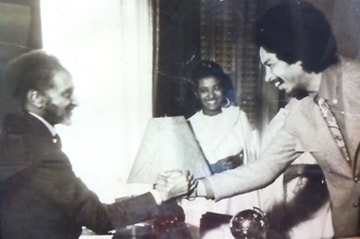
Emperor Haile Selassie and Stanley Lewis shake hands while Kibre Dawit looks on at the Ethiopia TM Teacher Training Course, 1973
Kibre Dawit, a young TMC teacher who had completed her teacher training in Europe the year before, helped organize this historic course in her home country of Ethiopia. With the help of her father, a career diplomat and an ambassador to Canada at the time, Dawit worked with the Ethiopian government to arrange for the course to be held that summer on the Alemaya Agricultural College campus.
Today, Dr. Kibre Dawit is the National Leader of the TM organization in Ethiopia, and the president of her own university there, which features the TM technique and Consciousness-BasedSM education in its curriculum.
To create scholarships for meditators to travel to Ethiopia and become TM teachers, Lewis and others organized the first TM celebrity fundraising concert in Santa Monica. It featured African American musicians from the Motown talent pool, including Smokey Robinson and Syreeta Wright, as well as jazz artists Herbie Hancock, Alice Coltrane, and Monk Montgomery.
The Ethiopia TM Teacher Training Course had 119 course participants. The majority were African Americans, plus 19 Ethiopians, and meditators from Mexico and China, who went on to become the national leaders of the TM organizations in their countries.
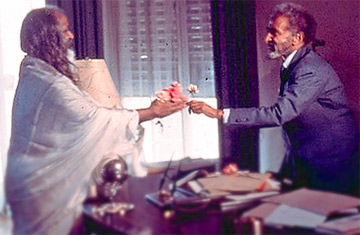
Maharishi Mahesh Yogi and the Emperor Haile Selassie, in Addis Ababa, Ethiopia, 1973
The highlight of the course was the final weeks of training with Maharishi.
One day during that time, all the participants were asked to go outside and enjoy the sunshine in a field. There they found that a dais and throne had been set up for Haile Selassie, the Emperor of Ethiopia, who had come to welcome these rising TM teachers from America and around the world.
Sibongile West, who was just 18 when she attended the Ethiopia course, recalls how life-changing it was in her interview with George Ellis, for his book A Symphony of Silence: An Enlightened Vision: “Of course, landing in Africa for an African American is life altering… That experience combined with the opportunity to become a teacher of this beautiful technique, and diving into the knowledge, were more than I could have imagined,” she said.
“On top of this, we had the life-changing experience of having an audience with Maharishi and Emperor Haile Selassie. This was one of the last public appearances of the Emperor before the coup [in 1974]. So to have this experience with Maharishi and this man, who was part of the lineage of the Queen of Sheba, was phenomenal,” she remembered.
“Landing in Africa for an African American is life altering… That experience combined with the opportunity to become a teacher of this beautiful technique, and diving into the knowledge, were more than I could have imagined.” —Sibongile West, TMC teacher
Before the Ethiopia course, West thought she wanted to be an attorney. “Then my heart changed, and I realized that teaching TM was what I wanted to do. The reality that was most real to me was the power of the inner silence,” she said. West has been teaching TM, helping found and teach TM and educational programs, and teaching TM for scientific research in communities of color ever since. Today, she is the Director of the Board for African PTSD Relief.
“Transcendental Meditation: Ancient Indian Technique for Relieving Stress Gains Foothold in Black Community” (Ebony, 1976)
As a result of the Ethiopia course, almost 100 new TM teachers went on to teach the TM technique to tens of thousands of people of color throughout the United States, Mexico, China, and Ethiopia. One of these new teachers was Dr. Shirley McNeil.
By the time she returned to Detroit in 1973, TMC, Inc. had evolved into two regions. “We in Detroit were known as TMC East and were responsible for activities east of the Mississippi,” Don West explains. He and Dr. McNeil brought the TM technique to communities of color in cities throughout the region. They also produced a radio show called “Take Twenty,” in which they interviewed people and informed listeners about the TM technique.
Their success, and that of TMC East and West as a whole, is epitomized in the July, 1976 issue of Ebony, which focussed on the Detroit TM community.

Dr. Shirley McNeil, National Director of Transcendental Meditation Center East, and Don West, Director of Detroit TMC, conduct a group meditation at the Center (photo courtesy of Ebony, July, 1976)
“Stress is a dangerous, invisible time bomb that ticks slowly in the mind and body,” begins Shawn D. Lewis’ article. “It is that explosive potential generated by a black executive working triple time in a white corporation to stay on top; that tautness in a black mother trying to stretch her welfare allotment to support seven children… Stress—unrelieved—can lead to stroke, kidney disease, heart attack, and the greatest killer of blacks, hypertension.
“Increasing numbers of blacks have found a new way to cope,” with Transcendental Meditation, “a 5,000-year-old technique that gained a foothold in the U.S. 17 years ago but did not cause ripples in the black community until 1972,” writes Lewis (no relation to Stanley Lewis). The article outlines the benefits of the TM technique for African Americans by profiling Detroit meditators and the outreach of West and Dr. McNeil.
Dr. McNeil was the first TM teacher to bring TM programs to inner city schools, including faculty of the Detroit Public School System, as well as to employees of the Michigan Department of Corrections.
“Increasing numbers of blacks have found a new way to cope,” with Transcendental Meditation, “a 5,000-year-old technique that gained a foothold in the U.S. 17 years ago but did not cause ripples in the black community until 1972.” —Shawn Lewis, Ebony
In 1976 at TMC West, teachers were breaking new ground in education as well. Syreeta Wright, the Motown recording artist and songwriter—”Signed, Sealed, Delivered (I’m Yours)” was one of her many hits—who became a TM teacher on the Ethiopia course, launched a preschool program in Los Angeles called “Something Special.” Sibongile West also helped develop and teach this program, which incorporated the TM technique and what is now known as Consciousness-BasedSM education in its curriculum.
The Detroit Nataki Talibah Schoolhouse
Another educator who learned TM from Don West at the Detroit TMC in 1973 was Carmen N’Namdi. She went on to create and be the principal for one of the most successful and influential charter schools for inner-city children.
The Nataki Talibah Schoolhouse of Detroit was founded by N’Namdi and her husband in 1978, named for a daughter who had died. Principal N’Namdi, a meditator who had always wanted to share the TM technique with her students, was able to add the twice-daily practice to the school’s wellness program in 1995, with Chrysler and General Motors as underwriters.

Students at the Nataki Talibah Schoolhouse in Detroit practicing the TM technique
Around 2004, filmmaker David Lynch visited this and other schools that included the practice of TM in its programs, leading to the founding of the David Lynch Foundation in 2005. “I had no idea how powerful and profound this technique could be until I saw firsthand how it was being practiced by young children in inner-city schools,” Lynch says in his founder’s message.
At a 2009 press conference for the Foundation, Principal N’Namdi talked about the effects of the TM practice for her students.
“We have found that through TM, over the past 13 years, our children are more focused on their work. They’re more patient with the learning experience, and they’re more reflective about their behavior,” she said. “There’s nothing more wonderful than to have teachers who don’t even work at the school any more or children who are now in high school, call you and say, ‘That was the greatest tool you could have ever given us.’ ”
The Beginnings of the Quiet Time Program, in Washington, D.C.
Paulette Bell-Imaan was another educator who envisioned the potential for the TM technique in inner-city schools. She learned TM in the early 1970s when she was a public school teacher in Washington, D.C. From the beginning, she wanted to found a school that would educate the whole child with the practice of TM in its curriculum, and she attended the Ethiopia TM Teacher Training Course to gain the skills and knowledge to fulfill that vision.

Paulette Bell-Imaan, Founder of the Ideal Academy Public Charter School in Washington, D.C., the first school with the TM technique as part of its charter
In 1999, she founded the Ideal Academy Public Charter School in Washington, D.C., the first school to include the practice of the Transcendental Meditation technique as part of its charter. Dr. George Rutherford II, the “grandfather” of the Quiet Time program, was the principal of the Ideal Academy—but before we tell that story we need to back up.
Although TMC, Inc. was dissolved in the 1980s as part of a nationwide reorganization of TM organizations, TMC teachers never stopped working together to bring the TM technique to communities of color, through education, community outreach, juvenile justice, crime reduction, scientific research, rehabilitation, and other programs.
In 1993, for example, a group of 10 African American teachers formed to work on reducing the crime rate in Washington, D.C., then “the murder capital” of the world. They approached schools, police departments, prisons, and universities to apply the TM technique and coherence-creating programs that Maharishi had designed, and which scientists were studying around the country and the world. Candace Martin, an attorney and TM teacher from the Ethiopia course, spoke about this effort in her interview with George Ellis in A Symphony of Silence.
TMC teachers never stopped working together to bring the TM technique to communities of color, through education, community outreach, juvenile justice, crime reduction, scientific research, rehabilitation, and other programs.
Dr. Rutherford, then the principal of Fletcher-Johnson Educational Center, a K-8 public school in a southeast D.C. area hardest hit by crime and drive-by shootings, recalled their presentation at his school in an interview: “I was standing at the back of the room joking with one of the teachers, saying, ‘I want to get the training.’ She knew I was joking, but she called my bluff and made an appointment for me. I was scared to death, but I learned the TM technique and loved it!”
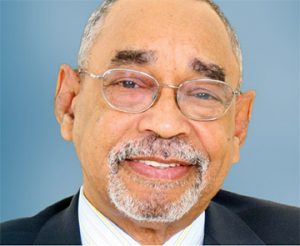
Dr. George Rutherford II, Principal of Ideal Academy Public Charter School and “grandfather” of the “Quiet Time” concept
Dr. Rutherford contacted Martin and the group who made the presentation at his school about teaching his staff and faculty the TM technique. Martin and Dr. Herb Bandy, a research engineer who had been a TMC teacher in Washington, D.C., taught them all in a week.
The effects were instantaneous and profound, Martin remembered. “It was such a relief for them! The faculty and staff had been very depressed before starting TM, and now they began to experience happiness and a sense of well-being. They began to express less fear and more efficiency,” she said. “The positive result of the staff and faculty learning TM also influenced the community. The crime rate actually began to drop around the school. There were fewer funerals to attend.”
Soon after that, Dr. Rutherford came up with the idea of having “Quiet Time” in the daily schedule, recalls Dr. Karen Bandy, a TM teacher and science writer who later taught TM at the school. To prepare students for learning the TM technique the following year, Dr. Rutherford chose this neutral term and arranged for two 10-minute periods of “quiet time” activities during the home room and afternoon, Dr. Bandy explains.
“The positive result of the staff and faculty learning TM also influenced the community. The crime rate actually began to drop around the school. There were fewer funerals to attend.” —Candace Martin, attorney and TMC teacher
The next year Dr. Rutherford enlisted Martin to organize for Fletcher-Johnson students and many family members to learn the TM technique. Rose Philips, a teacher from the Ethiopia course, and others provided the TM instruction, as well as ways to engage students in the principles of the practice.
“The school previously had the lowest testing scores in the District, and the District had some of the lowest testing scores in the nation. After the students started the practice of TM in April of that year, they were tested in May. This was a very short interval of time, but they achieved the highest scores in the District,” Martin recalled. “This started a national movement of establishing Quiet Time. The structure was put in place.”
Five years later, when Paulette Bell-Imaan founded the Ideal Academy Public Charter School in 1999, she and the Board of Trustees chose Dr. Rutherford to be the principal. In the mid-2000s, David Lynch visited the Ideal Academy. The impression the students made on him, together with those of the Nataki Talibah Schoolhouse in Detroit, led him to found the David Lynch Foundation (DLF).
As Dr. Karen Bandy observes, these schools were the “incubators” for the DLF Quiet Time program. With its financial resources, research, and reach, the Foundation was able to standardize and expand these original “experimental programs” for schools all over the country.

A Washington, D.C. gathering from around 1990, of TM meditators (standing) and TM teachers seated (l. to r.)—Rabia Rayford, Don Coles, Karen Bandy, Herb Bandy, Candace Martin, Naituli, Chinelo Haney, and Paulette Bell-Imaan
The Legacy of TMC Today, from the U.S. to Africa
The legacy of TMC, Inc. may be most visible in the David Lynch Foundation’s school programs, but it is evident in many other programs as well, from rehabilitation to health research, from the United States to Africa.
In the mid- to late-70s, TMC teachers were part of new programs and research on TM and rehabilitation in northern California. Randolph Carter, a graduate of the Ethiopia course, was a key TM teacher in George Ellis’ groundbreaking program at Folsom State Prison in California, the first time the TM technique was taught in a maximum-security prison. Carter also taught TM courses at San Quentin State Prison and Deuel Vocational Institute in California. The research conducted in these programs set the stage for future studies on TM and rehabilitation in Vermont and Massachusetts, among other places, and for the David Lynch Foundation’s prison programs today.
TMC teachers were also involved in scientific research on the health effects of the TM technique, such as the reduction of hypertension among African Americans with TM practice. Mawiyah Clayborne, Ph.D., a TM teacher who assisted with the Ethiopia course, was a co-author of numerous studies and instrumental in helping open doors for governmental support, which eventually led to millions of dollars in grants from the National Institutes for Health.
Beyond the United States, the mission of Africa PTSD Relief (APR) is to bring the TM technique to populations in Africa suffering from post-traumatic stress disorder because of war and extreme poverty. APR uses the cost-effective TM technique, which research has shown to significantly reduce PTSD symptoms in as few as 30 days. Sibongile West, president of the APR, says there are current projects in Kenya, Uganda, and the Congo.
Together, for over 50 years and counting, the work of these TM teachers in minority communities and beyond continues to fulfill the vision Maharishi spoke about in Ebony in 1968.
“There will be a time when black will be learning from white and white from black. When the heart is expanded, the mixing will be automatic; tolerance will be infinite; love will be great.” —Maharishi, Ebony, 1968
On March 17, 2019, TMC celebrated its history and legacy with a 50th Anniversary webcast, featuring inspiring talks and music by key figures, rare photos and video footage, and a keynote address by Dr. John Hagelin, director of the TM organization in the United States.
In Memoriam
Harriet Dee Monroe, Bob Kealing, Dr. Shirley McNeil, Mawiyah Clayborne, Rabia Rayford, and James Howard (Scotty) Scott.
Further Reading
Era Bell Thompson, “Meditation Can Solve Race Problem, Says Maharishi Mahesh Yogi,” Ebony (May 1968): XXIII, 7: 78–88.
Shawn D. Lewis, “Transcendental Meditation: Ancient Indian Technique for Relieving Stress Gains Foothold in Black Community,” Ebony (July 1976): XXXI, 9: 100–106.
George A. Ellis, “Part VI: African-American Vision for Illuminating and Facilitating Harmony in a Diverse World,” A Symphony of Silence: An Enlightened Vision, 2nd edition (North Charleston, SC: CreateSpace Independent Publishing, 2015), 477–576.
———, “Origins of TMC—Stanley Lewis,” A Symphony of Silence, 479–496.
———, “Edutainment: Leveraging Media and Consciousness—Bill Duke,” Symphony, 497–510.
———, “Forty Years of Dedication: Enlightenment and Inner Peace—Mpingo Griffin and Sibongile West,” Symphony, 511–524.
———, “The Future of Our Children—The Gift to Our World: An Interview with Candace Martin, J.D.,” Symphony, 525–544.
Ayida Mthembu, “Sun-beaconed with Hope,” Symphony, 545–550.
Mark Mugabe, “Uganda: Compassionate Commitment,” Symphony, 551–562.
David Orme-Johnson, Ph.D., “Cosmic Stillness for All Cultures,” Symphony, 563–576.

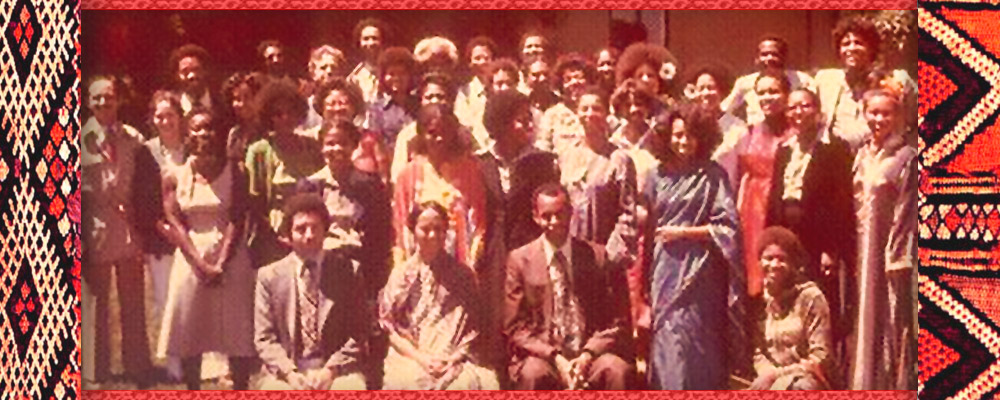




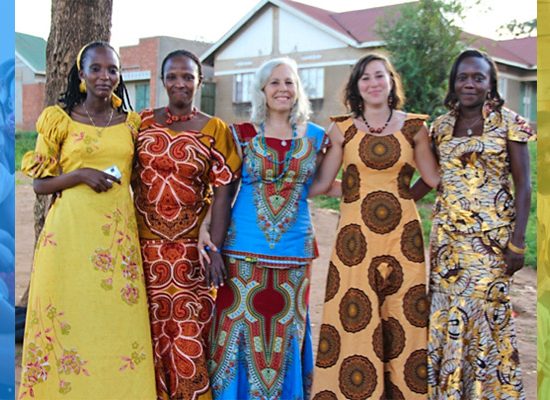
Thank you for this detailed article on so many great heroes. I was struck by how much good came out of just one person learning TM, then they became a teacher and taught more, then some people they taught in turn became teachers and taught even more.
I was delighted to learn that Maharishi and Dr King were going to meet in 1968, but of course disappointed that they didn’t in time.
Maharishi and Martin Luther King Jr had a lot in common. Maharishi advised not to fight the darkness, but to bring the light. Dr King said, according to Tulsi Gabbard on Van Jones, “Darkness cannot drive out darkness—only love can do that. Hate cannot drive out hate—only love can do that.”
Fortunately, the opportunity to accomplish what these two great heroes of conscience could have together, permanent national and world peace, was actually not lost, but only delayed, for those who now carry the mantles of both these true patriots for humanity are coming together March 17, and can gently seize the day.
Thank you!
I will be watching the celebration on the 17th!
How wonderful. I remember hearing about TMC around 1973 and I knew a few people involved in it including Yvonne Lewis. Thank you for telling the beautiful story of a strong, dedicated and effective group of people.
This was so inspiring! I am glad we will get to share the webcast with our meditators!
Thank you for collecting these wonderful and powerful memories of an extraordinary time and to those beautiful souls who continue to bring enlightenment to all of humanity.
This was a fantastic article. Thank you for honoring these pioneers who laid the foundation for so many programs today.
Absolutely fascinating! Absolutely inspiring! Thank you.
The webcast will be awesome!!
Jai Guru Dev
Extraordinary article about an important and inspiring part of the history of TM that I knew nothing about. And a wonderfully detailed introduction to the African American leaders that brought TM to their communities. Best wishes for the 50th Anniversary Webcast!!!!
What an inspiring article! Congratulations to the dedicated TM teachers who created and sustained TMC, and for 50 years of great achievements in bringing real relief to your communities and to many areas of society here and abroad.
Beautiful update! In San Francisco have contact with only one meditator who introduced me to TM, and I was taught by JeRu; I am so grateful for both of them. TM has kept me sane through many storms, sane through it all; so happy for this 50th Anniversary celebration! Jai Guru Dev
Dear Carol Tatum, I have been a meditator since 9-6-1970. Stan Lewis was my initiator and Lillian Rosen provided my advanced training. I relocated to the Bay Area from Los Angeles in 2010 and would love to meet you and others who practice TM. Please reach out. Jai Guru Dev. Patricia Pratt
Hi Carol and Patricia, The contact info and address for the SF TM Center is here: https://www.tm.org/transcendental-meditation-san-francisco Enjoy meeting soon!
It was a joy looking over the above group photos to see everybody. Yes! me too.
Excellent historical review of the inception and evolution of TM in the African American community. I was especially delighted to learn about the Ethiopian course. I learned TM in graduate school in 1975. Thank you!
This is a great history
Absolutely agree with Marcia and Joel! It is so great to know more about the history, success, present and future of TMC and of the realistic possibility that we live in a world where Love is Enjoyed by Everyone and everyone knows they Are Everyone–One!
Thank you for this wonderful article on TM in the Black community in Black History. It reminds me and refreshed myself of theses wonderful leaders in our community that touch my life and instill the importance of meditation. I’m so grateful to those Black pinoners in our community. It reminds me of old times. Jai Guru Dev. Thunder Lane, Washington D.C. TM meditator 1974.
I AM SO GRATEFUL! Thank you for sharing this history with your readers. And thanks to those of you who participated in the making of this history. Those of us who were teachers in TMC are hoping that through this article and the celebration that we can re-unite with the African American Meditators who learned TM thru TMC. In Washington DC, TMC Teachers, Jeru Hall, Candace Martin, Rena Boone and Paulette Bell are inviting everyone to connect and attend the March 17th Celebration which will be held at Seekers Church 276 Carroll St NW Washington DC 20012. For more information please call 202 269-3186
TMC: I recall sitting at Humboldt when Maharishi was meeting with TMC leaders at a course on the Science of Creative Intelligence. It has been an important part of the history of the development of the TM program throughout the world. I hope there is enough room for everyone who can attend the event.
Super update and inspiring article! Thanks for sharing.
Love of our family floods this heart and light fills every space eternal✨
Thank you for increasing the light by shining it on our beloveds, and the strong work done and still doing, as well what is generated by being. ?? Beautiful.
Terrific article! I recognize the names of some of the TMC teachers (from when I lived in Los Angeles and also Washington, DC) but I was too young to be aware of the scope of the work they were doing.
Wonderful, inspiring article that brought together many of my bits of knowledge—and many new ones too—into a marvelous whole. Thank you!
Thank you for this marvelous article. Let’s get more publicity for the 50th anniversary webcast and for these valiant efforts and great success in general.